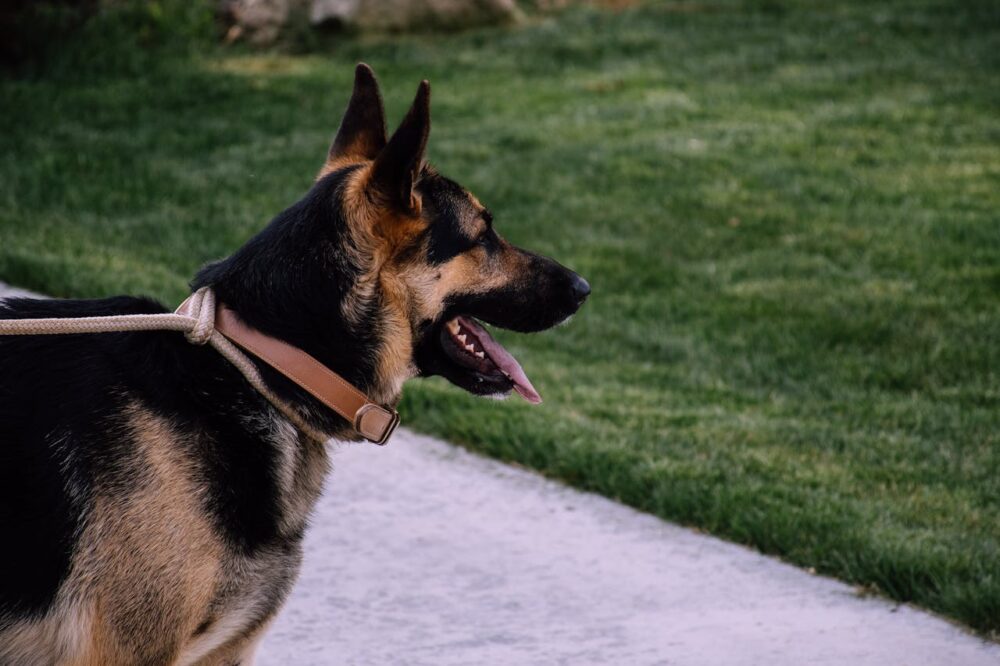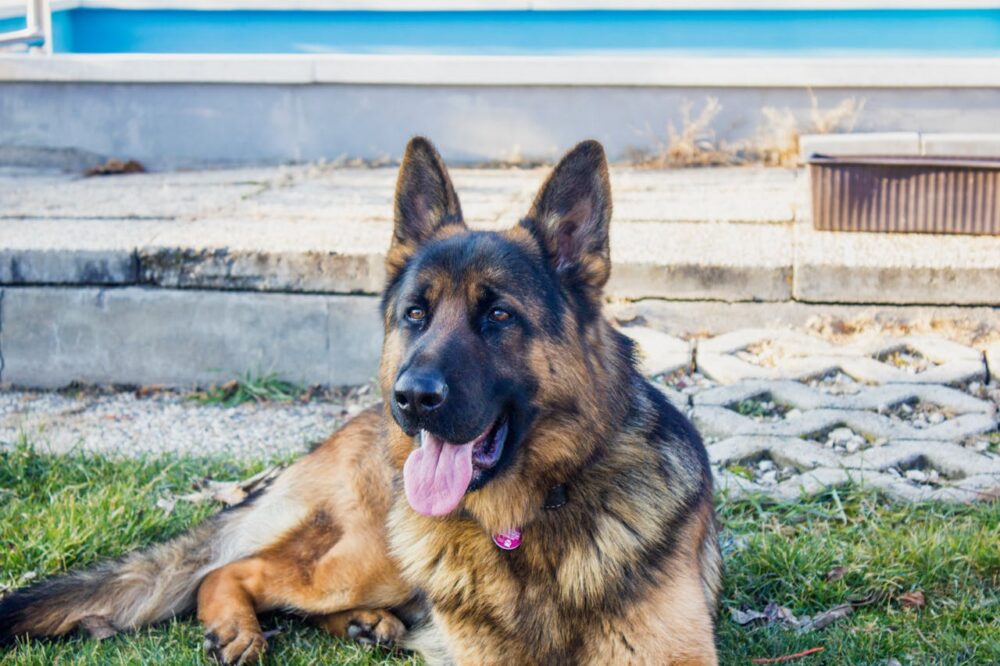Male vs Female German Shepherds (+ Tips for First-Time GSD Parents)
German Shepherds, renowned for their intelligence and versatility, are cherished companions and working dogs.
In this guide, we’ll explore the key differences between male and female German Shepherds, shedding light on their unique qualities. Whether you’re a seasoned owner or considering this breed, understanding these distinctions is crucial.
Let’s uncover the key differences that define them.
Key Takeaways
- Temperament and Behavior: Males often display protective and assertive behaviors, while females tend to be more nurturing and affectionate.
- Trainability: Both genders are highly trainable, but males may require firmer training, whereas females respond well to positive reinforcement.
- Health Considerations: Gender-specific concerns include testicular issues in males and heat cycles in females, along with common health issues.
- Choice Factors: Your decision should be based on specific needs and preferences, considering lifestyle, intended roles, and ability to meet their requirements.
For more in-depth information and resources, be sure to check out our sister website, ShepherdKingdom.com

Physical Differences Between Male & Female German Shepherds
German Shepherds, like many dog breeds, exhibit distinct physical differences between males and females. Let’s explore these distinctions in detail.
Size and Weight
Average Measurements for Males
- Height: 24 to 26 inches (61 to 66 cm) at the shoulder.
- Weight: 65 to 90 pounds (29 to 41 kg).
Average Measurements for Females
- Height: 22 to 24 inches (56 to 61 cm) tall.
- Weight: 50 to 70 pounds (23 to 32 kg).
Male German Shepherds tend to be larger and heavier than their female counterparts, making them a preferred choice for tasks requiring strength and imposing presence.
Coat Characteristics
Fur Length and Thickness
- Males: Often have slightly longer and thicker fur.
- Females: Tend to have a slightly shorter and less dense coat.
While these differences may not be extremely noticeable, they can affect grooming needs and tolerance to different climates.
Color Variations
Both males and females can come in various coat colors, including black and tan, sable, solid black, and more. Coat color is not a reliable indicator of gender differences as both exhibit the same range of colors.
Male Physique
Males typically have a more robust and muscular build with broader shoulders and chests, contributing to their imposing appearance.
Female Physique
Females usually have a leaner and more streamlined physique, exhibiting a more agile and graceful look. These differences in build and muscle mass can influence their suitability for specific roles or activities.
Male vs Female German Shepherd Temperament and Behavior Differences
Male Tendencies
Males can exhibit protective and territorial behaviors, making them potentially more assertive in guarding their home and loved ones. Some males may display dominance tendencies, requiring careful training and socialization.
Female Tendencies
Females are often more nurturing and affectionate, making them excellent family pets. They may exhibit protective behaviors but are generally less likely to show aggression compared to males.
Response to Commands
Both genders are highly intelligent and trainable. Males may require more consistent and firm training due to occasional stubbornness, while females tend to respond better to gentle and positive reinforcement methods.
Behavioral Differences in Training
Male German Shepherds may excel in protection and obedience training due to their assertiveness. Females may perform exceptionally well in agility and obedience training, showcasing their agility and adaptability.

Social Tendencies
Interaction with Other Dogs
Males can be more dominant when interacting with other dogs of the same gender, whereas females often have less intense rivalry, making multi-dog households easier to manage.
Interaction with Humans
Both genders are known for their loyalty to their human families, but females may form especially strong bonds with their caregivers.
Health Considerations
Male-Specific Concerns
- Testicular Issues: Males may be susceptible to testicular cancer or other problems.
- Neutering: Deciding whether or not to neuter your male can impact their long-term health.
Female-Specific Concerns
- Heat Cycles: Female German Shepherds go through regular heat cycles, which can be challenging to manage without breeding.
- Spaying: The decision to spay your female can affect her reproductive health and overall well-being.
Average Lifespan for Males
On average, male German Shepherds have a lifespan of around 9 to 12 years. Proper diet, exercise, and regular vet check-ups can help extend their life expectancy.
Average Lifespan for Females
Female German Shepherds tend to live slightly longer, with an average lifespan of 10 to 13 years. Providing a healthy lifestyle and regular preventive care can contribute to their longevity.
Genetic Predispositions
Common Health Issues in Males
- Hip Dysplasia: Males are prone to hip joint problems, leading to mobility issues.
- Bloat: Male German Shepherds may be at higher risk for gastric torsion, a potentially life-threatening condition.
- Degenerative Myelopathy: This neurological disease is more prevalent in males and can affect their mobility as they age.
Common Health Issues in Females
- Urinary Tract Infections (UTIs): Females may be more susceptible to UTIs due to their anatomy.
- Mammary Tumors: Unspayed females have a higher risk of developing mammary tumors, highlighting the importance of spaying.
For more detailed health tips and breed-specific care advice, visit ShepherdKingdom.com
Exercise and Activity Level Differences In Males Vs Females
Male Energy Levels
Male German Shepherds are typically high-energy dogs, often exhibiting bursts of enthusiasm and being more active compared to females.
Female Energy Levels
Females also possess considerable energy levels. They may have slightly less intense bursts of energy but remain quite active.
Daily Exercise Needs for Males
Male German Shepherds thrive on at least 1-2 hours of vigorous exercise daily. Activities like running, fetching, and agility training are ideal to keep them physically and mentally engaged.
Daily Exercise Needs for Females
Female German Shepherds require a similar amount of daily exercise. Engaging them in activities like obedience training and interactive play is essential for their well-being.
Potential Challenges
How Exercise Needs Affect Owners
Meeting the exercise needs of German Shepherds can be demanding for owners with busy schedules. Neglecting their exercise requirements can lead to behavioral issues and anxiety.
Tips for Managing Energy Levels
Consistent daily exercise routines are crucial for channeling their energy positively. Mental stimulation through puzzle toys and training exercises can help prevent boredom.
Suitability for Different Lifestyles
Males as Family Pets
Males can make wonderful family pets, providing protection and loyalty. They may be better suited for families with active lifestyles and older children due to their energy levels.
Females as Family Pets
Females are equally loving and protective, making them excellent family dogs. They may be a slightly better choice for families with younger children due to their typically gentler demeanor.
Male German Shepherds in Work Settings
Males are often chosen for roles in law enforcement, search and rescue, and protection. Their strength and assertiveness make them valuable assets in demanding work environments.
Female German Shepherds in Work Settings
Females are also highly capable in working roles, particularly in search and rescue and as service dogs. Their agility and adaptability make them excellent choices for various tasks.
Pros and Cons of Each Gender in Various Roles
Pros of Males:
- Stronger physical presence and protective instincts.
- Ideal for demanding work roles.
- Easier to train for certain tasks.
Cons of Males:
- May require more exercise and stimulation.
- Can be more dominant and stubborn.
Pros of Females:
- Often gentler and affectionate.
- Suitable for a wide range of roles.
- May adapt well to family life.
Cons of Females:
- Heat cycles may require management.
- May be less assertive in certain work settings.
Ultimately, the suitability of male or female German Shepherds depends on your specific needs and preferences. Consider your lifestyle, the role you envision for your dog, and your ability to meet their physical and mental requirements when making your choice. For more insights, visit ShepherdKingdom.com
Choosing a Male vs Female German Shepherd: Which is Better?
When it comes to bringing a German Shepherd into your life, one of the key decisions you’ll face is whether to choose a male or female. While there are notable differences between the two genders, it’s important to recognize that neither is inherently better than the other.
Instead, the choice should be based on your specific preferences, lifestyle, and what you’re looking for in a canine companion.
Conclusion
In the world of German Shepherds, the differences between males and females go beyond mere anatomy. Each gender brings its own unique qualities to the table, from physical attributes to temperament and suitability for various roles.
Whether you’re seeking a loyal family companion or a dedicated working partner, understanding these distinctions empowers you to make the right choice for your lifestyle.
Embrace the surprises and nuances of both male and female German Shepherds, and you’ll find a lifelong companion that fits seamlessly into your world.
Frequently Asked Questions About Male vs Female German Shepherds
What is better, a male or female German Shepherd?
Neither gender is inherently better; it depends on your preferences and needs.
Are male or female dogs more protective of their owners?
Protective instincts vary among individual dogs regardless of gender.
Are female dogs more loyal?
Loyalty is not gender-dependent; it’s based on the bond between a dog and its owner.
Which gender of dog is more expensive?
Costs depend on factors like breed, size, and individual health needs, not gender.
Is it better to have 2 dogs or 1 dog?
Whether it’s better to have 1 or 2 dogs depends on your ability to care for them and their compatibility.

